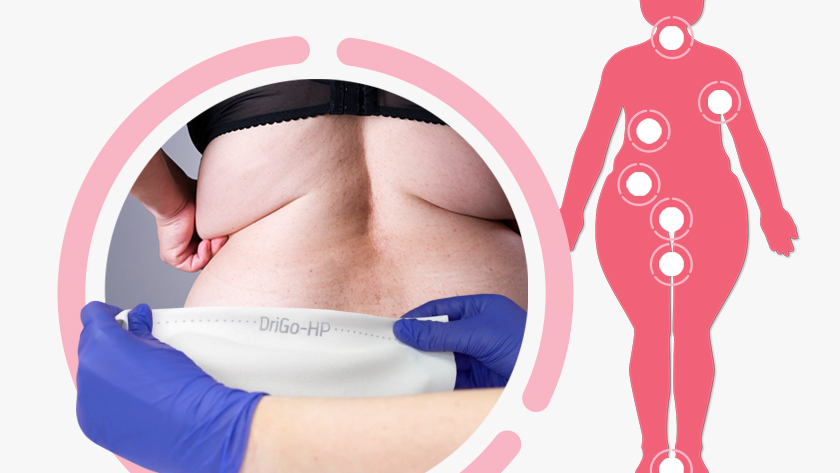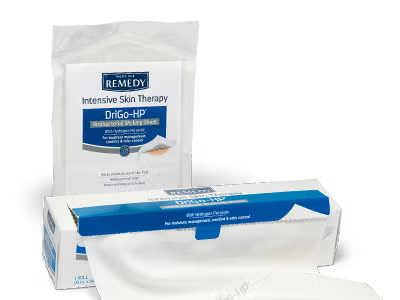Intertrigo: Empower staff to manage moisture and reduce skin breakdown
Discover the science behind the prevention of intertriginous dermatitis.

By Gregory Schultz, PhD
Knowing how to use a product is an essential part of your job. But looking beyond that—to why it works—empowers you and your staff to choose the right strategy every time.
Innovative product technology provides a good opportunity to show you why knowing the science can help inform evidence-based best practices. One such technology uses hydrogen peroxide to manage moisture and minimize skin-on-skin friction, which can reduce the likelihood of intertrigo between skin folds.
Intertrigo, also called intertriginous dermatitis (ITD), is a type of moisture-associated skin damage (MASD). It is an inflammatory skin condition that often appears as a red, oozing rash in skin folds when they rub together and trap moisture.
How can hydrogen peroxide improve skin fold health?
First, a stable complex of hydrogen peroxide with zinc oxide is bonded onto the surface of specially formulated textile fibers.
When the dry textile absorbs liquid sweat, the hydrogen peroxide is released over a sustained period of time. This creates an effective antibacterial surface that kills bacteria that comes into contact with the textile fibers. We describe the hydrogen peroxide as “sequestered” in the fabric.

The difference between sequestered and regular H2O2
Hydrogen peroxide molecules that are sequestered in a zinc oxide complex on textile fibers behave much differently than a regular solution of hydrogen peroxide. Normally, when a solution of hydrogen peroxide in water evaporates, the hydrogen peroxide molecules break down into water and oxygen.
This new technology, with sequestered H2O2, creates a stabilized reservoir of hydrogen peroxide on the surface of textile fibers.
Bonding it with zinc oxide is the trick.
Zinc oxide is an ideal stabilizing complex because it has zero cytotoxicity, which is what makes it so popular in sunscreens.
Should you be worried about the safety of hydrogen peroxide?
If you’re wondering about the safety of using hydrogen peroxide for skin moisture management, just remember it’s sequestered in a complex of zinc oxide.
In addition, the concentration is extremely low—0.3 percent. Compare that to a typical over-the-counter disinfectant solution of hydrogen peroxide, which typically contains 3 percent hydrogen peroxide, or hair bleaching solutions, which are as high as 10 percent.
Key takeaway
Knowing that a product works well to prevent skin breakdown is important, but understanding why it works gives you greater power to choose the right product for your patients. Using the example of new technology, you can begin to understand how sequestered hydrogen peroxide minimizes skin-on-skin friction to reduce the likelihood of developing intertriginous dermatitis between skin folds.

Dr. Gregory Schultz is Emeritus Professor of Obstetrics and Gynecology and former Director of the Institute for Wound Research at the University of Florida, and a Medline consultant.
Discover more content to help you fight MASD:
Obesity and skinfolds: 4 proven ways to help shield patients from moisture-associated skin damage
Watch the webinar: Redesigning hydrogen peroxide for next-generation skin care
Managing incontinence associated dermatitis: compare two skin protectants to see why ingredients matter
Recommend the class: Moisture-Associated Skin Damage (MASD) and Continence Management for Nursing Assistants
Incontinence: Highlight the problem to lower risk of IAD and pressure injuries
